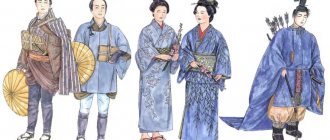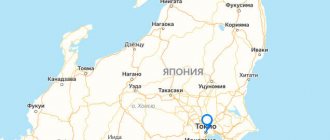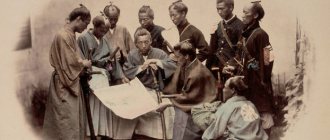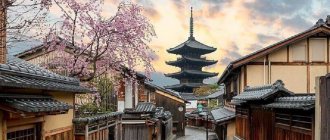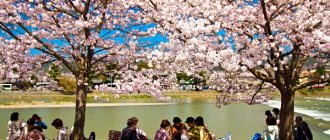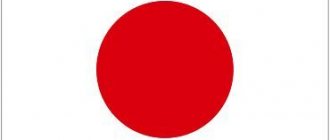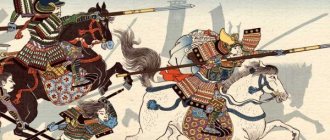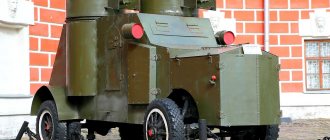Shimazu Yoshihisa
One of the most famous warlords of the Sengoku , Shimazu Yoshihisa , was from Satsuma . He was married to his aunt for some time. He started a campaign to unify Kyushu and had many victories. His clan ruled large parts of Kyushu for many years, but were eventually defeated by Toyotomi Hideyoshi . After his defeat Yoshihisa is believed to have retired and become a Buddhist monk . He died a peaceful death.
Date Masamune
Known for his affinity for violence and lack of mercy , Dama Masamune was one of the most feared warriors of his era. Having lost his right eye as a child due to smallpox, he had to put in extra effort to be recognized as a fighter . After a series of defeats in the early days, he slowly built his reputation and became one of the most effective warriors of the time. When his father was kidnapped by his clan's enemies, Masamunne responded by killing everyone and his father during the mission. He later served Toyotomi Hideyoshi and Tokugawa Ieyasu .
Uesugi Kenshin
Known as the Dragon Ehigo , Kenshin was a fierce warrior and leader of the Nagao . He was known for his rivalry with Takeda Shingen . They fought each other for years, dueling several times. He was also one of the military leaders who resisted the campaigns of Oda Nobunaga . He was an authoritative commander. There are various stories surrounding the cause of his death.
Samurai in power
Over the years, the samurai's power increased and even became so strong that after the Genpei War (1180-1185), they ruled Japan under the command of Minamoto no Yoritomo, a powerful samurai who became shogun. Around 1192, Seyi Taisōgun founded the Komakura shogunate, in which common samurai held power and ruled Japan.
Samurai were expected to always act with integrity, be literate, and be knowledgeable about the cultural aspects of society. In the 13th century, Zen Buddhism became a popular religion in Japan, as well as for samurai.
There is a myth that a samurai who had just received a brand new katana had the right to test it on the first person he met. The katana was no longer the only object that a Japanese warrior had to respect. For example, they were given numerous attributes of the samurai code, such as denying the fear of death or killing opponents. At the same time, they acquired the status of elite warriors and were highly skilled in martial arts and military strategy.
Many opponents feared them. They repelled the invasions of powerful Mongol warriors led by Genghis Khan several times, as well as the attacks of the Korean and Chinese emperors. The development of strategic warfare led by the samurai moved very quickly.
Samurai hairstyle
Did you know that Chonmage is a traditional Japanese hairstyle associated with the samurai? With this haircut, the head was shaved on top to easily wear a samurai helmet. The hairstyle eventually came to be seen as a status symbol. Nowadays you often see chonmage in sumo wrestlers.
During the chaotic era of warring states in the 15th and 16th centuries, Japan split into dozens of independent states constantly at war with each other. Consequently, warriors were in demand. This was also the era when ninjas, warriors who specialized in unconventional methods of warfare, were most active. Many of Kurosawa's famous samurai films take audiences back to this time.
Everything you know about ninjas is wrong!
Relative peace prevailed for about 250 years of the Edo period. During the Tokugawa Shogunate (1608-1863), the samurai gradually lost their military function. As a result, the importance of martial skills declined, and many samurai became bureaucratic officials, teachers, or artists. Katanas and other samurai swords were used only for ceremonial practices, because fighting someone with edged weapons was almost impossible. Japan's feudal era eventually ended. During the Meiji Restoration (1868–1889), an important period of political revolution in Japan, the samurai class was officially abolished and the carrying of the samurai sword was prohibited.
This was not without struggle, of course, and in 1877 there was the great rebellion of the Satsuma, the traditional samurai, against the modern government. Japanese warriors eventually gained more power in government, but the "way" of the traditional samurai was ended. Currently, Bushido is only a way of communicating with each other and weapons in Japanese martial arts. However, Bushido still lives on among many Japanese people, and samurai are still considered the most legendary warriors in Japan.
Tokugawa Ieyasu
Initially, Oda's ally Nobunaga and his successor Toyotomi Hideyoshi Tokugawa Ieyasu used his brain more than his sword. After Hideyoshi's he gathered the enemies of the Toyotomi and fought against them for power. He defeated Toyotomisa at the Battle of Sekigahara in 1600 and became the first Togugawan shogun in 1603. The Tokugawa shogunate ushered in a new era of peace in Japan and ruled until 1868.
The most famous samurai of Japan
TAIRA NO KIYOMORI (1118 - 1181) Was a commander and warrior, thanks to whom the first samurai administrative system of government in the history of the Japanese state was created. Before his work began, all samurai were simply hired warriors for aristocrats. After this, he took the Taira clan under his protection and quickly achieved success in political activities. In 1156, Kiyomori, together with Minamoto no Yoshimoto (head of the Minamoto clan), managed to suppress the rebellion and began to rule the two highest warrior clans in Kyoto. As a result, their alliance turned into bitter rivals, and in 1159 Kiyomori defeated Yoshimoto. Thus, Kiyomori became the head of the most powerful warrior clan in Kyoto. Kiyomori was able to seriously advance his career. In 1171, he gave his daughter in marriage to Emperor Takakura. A little later, their first child was born, who was often used as leverage on the emperor. However, the samurai’s plans could not be implemented; he died of fever in 1181. II NAOMASA (1561 - 1602) Was a famous general or daimyo during the period when the Tokugawa Ieyasu shogun was in power. He was one of the most loyal samurai that Japanese history has known. He rose significantly through the ranks and received great recognition after 3,000 soldiers under his leadership won the Battle of Nagakute (1584). He fought with such vigor that even his opponents admired his behavior on the battlefield. The Battle of Sekigahara brought him the greatest popularity. During the battle, he was hit by a stray bullet, after which he was never able to fully recover. His squad was called the “Red Devils” for the corresponding color of the armor that the warriors wore during battle to intimidate their opponents. DATE MASAMUNE (1567 - 1636) He was ruthless and merciless, that’s what almost everyone said about him. He was an outstanding warrior and an excellent strategist, and his personality was made even more memorable due to the loss of one eye, for which Masamune received the nickname "One-Eyed Dragon". He was supposed to take the leading place in the clan after his father, but the loss of his eye caused a split in the family and his younger brother Date came to power. Already being a general, the samurai was able to gain a good reputation and was rightfully considered a leader. It was after this that he launched a campaign in order to defeat the neighboring clans. This created considerable excitement. As a result, the neighboring clan turned to the father with a request to curb his eldest son. Terumune was kidnapped, but he managed to warn his son about a similar outcome of events and asked him to kill all members of neighboring clans. Date Masamune followed his father's instructions. Although this contradicts some ideas about samurai, Date Masamune was a supporter of religion and culture. He even knew the Pope personally. HONDA TADAKATSU (1548 - 1610) Was a general and one of the Four Heavenly Kings of Ieyasu along with Ii Naomasa, Sakakibara Yasumasa, and Sakai Tadatsugu. Of the four, Honda Tadakatsu had the reputation of being the most dangerous and merciless. He was a true warrior, even in the depths of his soul. So, for example, Oda Nobunaga, who, by the way, was not very happy with his followers, considered Tadakatsu a real samurai among all the other samurai. It was often said about him that Honda bypassed death itself, since he never received serious injuries, despite the fact that the number of his battles exceeded many dozens.. HATTORI HANZO (1542 - 1596) He was the most famous samurai and ninja of the Sengoku era . Thanks to him, Emperor Tokugawa Ieyasu survived, and a little later became the ruler of a united Japan. Hattori Hanzo showed brilliant military tactics, for which he received the nickname Devil Hanzo. He won his first battle at a very young age - Hanzo was only 16 years old at the time. After this, he was able to free the Tokugawa daughters from hostages at Kaminogo Castle in 1562. The year 1582 was decisive for him in his career and in gaining a leading position - he helped the future Shogun escape from his pursuers to the province of Mikawa. Local ninjas helped him in this operation. Hattori Hanzo was an excellent swordsman and in his last years, as historical sources say, he hid under the guise of a monk. Many often attributed supernatural abilities to this samurai. They said that he could instantly hide and appear in the most unexpected places. BENKEI (1155 - 1189) was a warrior monk who was in the service of Minamoto no Yoshitsune. Benkei is perhaps the most popular hero of Japanese folklore. Stories about his origins are varied: some claim that he was born to a raped woman, while others are inclined to believe that Benkei was a descendant of a god. Rumor has it that this samurai killed at least 200 people in each of his battles. An interesting fact is that at the age of 17 he was more than 2 meters tall. He learned the art of using a naginata (a long weapon that is a mixture of a spear and an axe) and left a Buddhist monastery to join a sect of mountain monks. According to legend, he went to the Gojo Bridge in Kyoto and was able to disarm every passing swordsman. Thus, he was able to collect 999 swords. During the 1000th battle with Minamoto no Yoshitsune, Benkei was defeated and forced to become his vassal. Several years later, while under siege, Yoshitsune committed ritual suicide while Benkei fought for his master. Rumor has it that the remaining soldiers were afraid to oppose this giant. In that battle, the samurai killed about 300 soldiers, who saw with their own eyes how the giant, pierced by arrows, was still standing. So everyone was able to find out about Benkei’s “standing death.” UESUGI KENSHIN (1530 - 1578) This was one of the most powerful commanders of the Sengoku era in Japan. He believed in the Buddhist god of war, and his followers were convinced that Uesugi Kenshin was an incarnation of Bishamonten. He was the youngest ruler of Echigo Province - at the age of 14 he took the place of his older brother. He agreed to go against the greatest commander, Takeda Shingen. In 1561, the largest battle between Shingen and Kenshin took place. The results of the battle were mixed, as both sides lost about 3,000 people in this battle. They were rivals for more than 14 years, but even this fact did not stop them from exchanging gifts. And when Shingen died in 1573, Kenshin could not come to terms with the loss of such a worthy opponent. Data on the death of Uesugi Kenshin are ambiguous. Some say that he died from the consequences of heavy drinking, others are inclined to believe that he was seriously ill. TAKEDA SHINGEN (1521 - 1573) This is perhaps the most famous samurai in Japanese history. He is known, by and large, for his unique military tactics. Often referred to as the "Tiger of Kai" for its distinctive characteristics on the battlefield. At the age of 20, he took the Takeda clan under his wing, then united with the Imagawa clan - as a result, the young warlord gained power over all nearby territories. He was the only samurai who had enough strength and skill to defeat the powerful Oda Nobunaga, who was striving for power over all of Japan. Shingen died while preparing for the next battle. Some say that he was wounded by a soldier, while others are inclined to believe that the samurai died of a serious illness. TOKUGAWA IEYASU (1543 - 1616) This is the first shogun and founder of the Tokugawa shogunate. His family practically ruled the Land of the Rising Sun from 1600 until the start of the Meiji Restoration in 1868. Ieyasu gained power in 1600, three years later he became shogun, and two years later he abdicated his position, but remained in power the rest of the time until his death. He was one of the most famous commanders in the entire history of Japan. This samurai outlived many famous rulers in his lifetime: Oda Nobunaga laid the foundation for the shogunate, Toyotomi Hideyoshi seized power, Shingen and Kenshin, two of his strongest rivals, were dead. The Tokugawa Shogunate, thanks to Ieyasu's cunning mind and tactical thinking, would rule Japan for another 250 years. TOYOTOMI HIDEYOSHI (1536 - 1598) This is also the most famous samurai of his kind. He was a general and a great politician of the Sengoku era, as well as the second unifier of Japan and the man who brought an end to the Warring States period. Hideyoshi made efforts to create some cultural heritage. For example, he introduced a restriction that meant that only members of the samurai class could carry weapons. In addition, he financed the construction and restoration of many temples, and also played a significant role in the history of Christianity in Japan. Hideyoshi, despite his peasant origins, was able to become Nobunaga's great general. He failed to obtain the title of shogun, but made himself regent and built a palace. As his health began to fail, Hideyoshi began to conquer the Ming Dynasty with the help of Korea. The class reforms carried out by the samurai significantly changed the Japanese social system. ODA NOBUNAGA (1534 - 1582) He was a powerful samurai and military leader who made a lot of efforts to unite Japan. He devoted his entire life to conquest. He is remembered as the most brutal and powerful force of the Warring States era, as well as Japan's greatest ruler. It was he who changed the tactics of military affairs on the territory of the Land of the Rising Sun. Thanks to him, soldiers began to use pikes, as well as strengthen castles and use firearms. Thanks to such innovations, the commander was able to win many victories. In addition, he organized a military class system based on a soldier's abilities, background and social status, as well as achievements and merits. Nobunaga was also a true admirer of art. Famous samurai of Japan made an invaluable contribution to the formation of statehood and the formation of the country's history itself. Their names are known to practically everyone who is proud of their origin and place of birth. Samurai were a legend, despite the fact that they were ordinary people with incredible fortitude and an irresistible will to win. Samurai are the greatest warriors who wrote the history of Japan with their blood. Sources: Internet resources.
Gallery
show all photos
News from Sakhalin and the Kuril Islands on WhatsApp - constantly throughout the day.
Subscribe with one click!
If you have a topic, write to us on WhatsApp: +7-962-125-15-15
Hattori Hanzo
The leader of the Iga , Hattori Hanzo was one of the rare samurai who were also ninja warriors . He was a loyal servant of Tokugawa Ieyasu , who saved his master from death several times. His main weapon was a spear . In his older years, Hanzo became a Buddhist monk. He is one of the most famous warriors in Japanese pop culture and has inspired many warriors.
The meaning of the word "samurai"
- Samurai (Japanese 侍, in Japanese the word “bushi” (武士) is also used) - in feudal Japan - secular feudal lords, ranging from large sovereign princes (daimyo) to small nobles; in the narrow and most frequently used meaning - the military-feudal class of small nobles. Although the words “samurai” and “bushi” are very close in meaning, “bu” (warrior) is a broader concept, and it does not always refer to a samurai. An analogy is often drawn between samurai and European medieval chivalry, but such a comparison is largely incorrect.
The word “samurai” itself comes from the ancient indefinite form of the verb “to serve” (Japanese 侍ふ saburau); that is, a samurai is a service man. Samurai are not only warrior-knights. They were both the bodyguards of their daimyo or overlord, and at the same time his servants in everyday life.
The main weapons of the samurai were two Japanese swords - daisho. In the XIV - XIX centuries it was the katana and wakizashi. In addition, the samurai had to wield a longbow. Samurai armor was made from many plates tightly laced together.
SAMURAI
, I,
m.
[Japanese.
samurai - guard, knight]. Member of Japan's privileged feudal military caste (historical). || advantage
pl. The name given by the Soviet people to the Japanese military, which is pursuing a policy of imperialist conquests (new disdain)
- We know how to fight.
Let's not let the samurai trample our grass. Alymov.
Source:
“Explanatory Dictionary of the Russian Language” edited by D. N. Ushakov (1935-1940);
(electronic version):
Fundamental electronic library
Making the Word Map better together
Hello!
My name is Lampobot, I am a computer program that helps you make Word Maps. I can count perfectly, but I still don’t understand very well how your world works. Help me figure it out! Thank you!
I will definitely learn to distinguish widely used words from highly specialized ones.
How clear is the meaning of the word imperialist
(adjective):
Source of the article: https://kartaslov.ru/%D0%B7%D0%BD%D0%B0%D1%87%D0%B5%D0%BD%D0%B8%D0 %B5-%D1%81%D0%BB%D0%BE%D0%B2%D0%B0/%D1%81%D0%B0%D0%BC%D1%83%D1%80%D0%B0%D0 %B9
Takeda Shingen
Often called the Tiger Kai , Takeda Shingen was a fearsome warrior as well as a poet. He fought in numerous battles. At the fourth battle of Kawanakajima , he faced his rival Uesugi Kenshin in a one-on-one battle. He was one of the few warriors who succeeded against Oda Nobunaga and had the opportunity to stop him. However, Shingen died under mysterious circumstances in 1573, after which Nobunaga consolidated power.
Honda Tadakatsu
Also known as the "Warrior Who Transcended Death" , Honda Tadakatsu was one of the most brutal warriors Japan has produced. One of the Four Tokugawa , he fought in over hundreds of battles and was not defeated in any of them. His main weapon was a spear known as the Dragonfly cutter , which caused fear in every opponent. Tadakatsu fought in the decisive Battle of Sekigahara , which led to a new era in Japanese history.
Samurai image
The key feature of a samurai's costume, his identification, is daisho. These are two curved iron swords. Since swords were sacred, that is, sacred objects, they were treated with great respect, looked after daily and cherished as a part of themselves. When going to bed, the sword was placed at the head of the bed, and during the day it was kept on a special wooden stand, at which the servant stood.
Additionally, each warrior had a katana, resembling a saber about 75 cm long.
yumi bow , which was revered in the same way as swords and was considered an animate object endowed with great power. It reaches a length of 2 meters.
Samurai armor was a suit of metal plates covered with leather and connected with lacing, weighing about 15 kg.
Miyamoto Musashi
The most famous samurai warrior for many years, Miyamoto Musashi was one of the greatest swordsmen that Japan has ever lived. His first duel was at the age of 13 . He fought in the battle between the Toyotomi against the Tokugawa , on the Toyotomi side, which would eventually be defeated. He later traveled throughout Japan, winning over 60 duels and never losing. Musashi's most famous duel took place in 1612, in which he fought and killed Sasaki Kojiro In subsequent years, he spent more time composing and wrote The Book of Five Rings, which details various sword fighting techniques.
10 famous samurai and how they are remembered in history
Samurai embodied the image of an ideal warrior who revered culture and laws, and who took his chosen path in life seriously. When a samurai failed his master or himself, according to local customs he had to be subjected to the ritual of “seppuku” - ritual suicide, i.e. hara-kiri.
1. Hojo Ujitsuna (1487 - 1541)
Ujitsuna sparked a long-standing feud with the Uesugi clan - the owner of Edo Castle, which has now grown into the giant metropolis of Tokyo, but then it was an ordinary castle covering a fishing village. Having taken over Edo Castle, Ujitsuna managed to spread his family's influence throughout the Kanto region (Japan's most populous island, where the capital of the state is located - Tokyo) and by the time of his death in 1541, the Hojo clan was one of the most powerful and dominant families in Japan.
2. Hattori Hanzo (1542 - 1596)
This name may be familiar to fans of Quentin Tarantino, since it was based on the real life biography of Hattori Hanzo that Quentin created the image of the swordsman for the film Kill Bill. Starting at the age of 16, he fought for survival, participating in many battles. Hanzo was devoted to Tokugawa Ieyasu, more than once saving the life of this man, who later founded the shogunate, which stood at the head of Japan for more than 250 years (1603 - 1868). Throughout Japan he is known as a great and devoted samurai who has become a legend. His name can be found carved at the entrance to the imperial palace.
3. Uesugi Kenshin (1530 - 1578)
Uesugi Kenshin was a strong military leader and also the leader of the Nagao clan. He was distinguished by his outstanding ability as a commander, resulting in his troops achieving many victories on the battlefield. His rivalry with Takeda Shingen, another warlord, was one of the most widely known in history during the Sengoku period. They feuded for 14 years, during which time they engaged in several one-on-one fights. Kenshin died in 1578, the circumstances of his death remain unclear. Modern historians believe it was something similar to stomach cancer.
4. Shimazu Yoshihisa (1533 - 1611)
This is another Japanese warlord who lived throughout the bloody Sengoku period. While still a young man, he established himself as a talented commander, a trait that later allowed him and his comrades to capture most of the Kyushu region. Yoshihisa became the first to unite the entire Kyushu region; it was subsequently defeated by Toyotomi Hideyoshi (a military and political figure, the unifier of Japan) and his 200,000-strong army.
5. Mori Motonari (1497 - 1571)
Mori Motonari grew up in relative obscurity, but this did not stop him from taking control of several of the largest clans in Japan and becoming one of the most feared and powerful warlords of the Sengoku period. His appearance on the general stage was sudden, and equally unexpected was the series of victories he won over strong and respected opponents. He eventually captured 10 of the 11 provinces in the Chugoku region. Many of his victories were against much larger and more experienced opponents, making his feats even more impressive.
6. Miyamoto Musashi (1584 - 1645)
Miyamoto Musashi was a samurai whose words and opinions still mark modern Japan. Today he is known as the author of The Book of Five Rings, which describes the strategy and philosophy of samurai in battle. He was the first to use a new fighting style in the sword technique of kenjutsu, calling it niten ichi, when the fight is fought with two swords. According to legend, he traveled through ancient Japan, and during his travels he managed to win many fights. His ideas, strategies, tactics and philosophies are the subject of study to this day.
7. Toyotomi Hideyoshi (1536 - 1598)
Toyotomi Hideyoshi is considered one of Japan's Founding Fathers, one of three men whose actions helped unify Japan and end the long and bloody Sengoku era. Hideyoshi succeeded his former master Oda Nobunaga, and began to implement social and cultural reforms that determined the future direction of Japan for a period of 250 years. He banned sword ownership by non-samurai, and also began a nationwide search for all swords and other weapons that were henceforth to belong only to samurai. Although this concentrated all military power in the hands of the samurai, such a move was a huge breakthrough towards general peace since the reign of the Sengoku era.
8. Takeda Shingen (1521 - 1573)
Takeda Shingen was perhaps the most dangerous commander of the entire Sengoku era. When it turned out that his father was going to leave everything to his other son, Shingen allied himself with several other powerful samurai clans, which pushed him to expand beyond his home province of Kai. Shingen became one of the few who were able to defeat the army of Oda Nabunaga, who at that time was successfully capturing other territories of Japan. He died in 1573, suffering from illness, but by this point he was well on his way to consolidating power over all of Japan.
9. Oda Nobunaga (1534 - 1582)
Oda Nobunaga was the driving force behind the unification of Japan. He was the first military leader to rally a huge number of provinces around himself and made his samurai the dominant military force throughout Japan. By 1559, he had already captured his home province of Owari and decided to continue what he had started, expanding his borders. For 20 years, Nobunaga slowly rose to power, emerging as one of the country's most feared military leaders. Only a couple of people, including Takeda Shingen, managed to win victories against his unique military tactics and strategy.
10. Tokugawa Ieyasu (1543-1616)
Tokugawa Ieyasu had amazing insight and unique intuition, which more than once rescued him in the most hopeless and dangerous life situations. Even in his youth, he was able to recognize and deeply understand the danger looming over the country as a result of cruel and merciless inter-feudal wars that lasted a whole century. Having suffered fear for the life of himself and his family and friends, Ieyasu firmly decided to devote himself to the struggle to establish peace in the country and revive its national statehood.
Toyotomi Hideyoshi
Oda Nobunaga's successor , Toyotomi , was a powerful ruler and warrior . Born into a peasant family, he slowly rose to power through his skills and on the battlefield. He ruled most of Japan from 1585 until his death in 1598, although he never received the title "Shogun" . Hideyoshi built a massive castle in Osaka and fought battles to conquer Korea and China, although without success.
Soon after his death, his clan was destroyed.
How do you say "samurai" in Japanese?
What is the difference between seppuku and hara-kiri?
tomato and tomato is an incorrect comparison.
It would be more accurate to say that not every Japanese could perform seppuku
, but harakiri - everyone (plus - if hara-kiri is like an execution, then the whole process could be simulated: the condemned person touched his stomach with a fan, and at that moment his head was cut off with a sword.
我需要告訴我你要去哪裡-how to pronounce the hieroglyph in Russian?
As Daria K correctly noted, if you pronounce a phrase in Russian, the native speaker will not understand you. Besides, the phrase is strangely translated: “I need to tell myself where you are going to go.”
Who was a more skilled warrior - a Japanese samurai or a European knight?
Firework! I’ll say right away that I’m not a professional or an expert, but just an amateur who has been fencing for 8 years. Of these, 4 are fencing with long swords, knightly, so to speak, weapons. However, I have an opinion on this issue:
What is a more skilled swordsman? The question is controversial, so I will answer the question of who would win in a duel between two approximately equal in their experience in the Art of the Sword.
The task is to compare two representatives of the military elite of their time, who lived in different parts of the world and never met. Both warriors fought in armor and both warriors had a sword. In order to be as objective as possible, I will take one time period (for both knights and samurai changed over time) and this will be the end of the 15th century, the Age of the Warring States - Sengoku Jidai. And within this gap, I will take as criteria such phenomena that can be at least somehow compared.
Let's take a brief look at the main articles:
For both warriors, the sword is called a secondary weapon (sidearm). The knight's main weapon is a spear, and the samurai's main weapon is a bow.
Knight's long sword - (one and a half, bastard) is a double-edged blade made of high-quality hardened steel, equipped with a guard (first simple, then developed) and a pommel. Average length 130 cm, weight 1500 grams.
A samurai katana is a saber (I use European and Russian weapons science). That is, the blade is sharpened on one side, without a guard and without a weighty pommel. Average length 110cm, weight 1500 grams.
Conclusion: With equal weight, the knightly sidearm is 20cm longer than the samurai sidearm, has better balance and hand protection. The knight wins.
Comparing armor is much more difficult than swords, since they rapidly evolved in Western Europe and it is difficult to draw a correct parallel. Therefore, I will take the Warring States (Sengoku) as the pinnacle of development of the samurai as a class. This is the middle of the 15th century.
Knightly armor is full plate armor made of hardened steel, equipped with stiffening ribs and is virtually invulnerable to slashing blows. Average weight is around 20 kg.
Samurai armor (Sengoku era) is laminar armor, that is, armor made of small metal plates. I don’t know the average weight, but I think it’s around the same 20 kg. (just in case: it’s a myth that armor limits mobility)
Conclusion: knightly armor is plate armor with stiffening ribs, virtually invulnerable to slashing blows and significantly neutralizing the crushing effect of any hit. Samurai armor is at least a century behind in its technology, and therefore is outdated and less effective. The knight wins.
3) Anthropometric data.
The knight is an average European man. Height 175 (for the 15th century), weight 70 kg.
Samurai is an average Japanese man. Height 150 (judging by the armor at the Samurai: Art of War exhibition), weight 55 kg.
Conclusion: the knight was much larger and heavier than the Japanese. And in fencing in armor, as in bokeh, all other things being equal, the heavier one wins. The knight wins.
4) The art of fencing. (The juiciest)
So we come to the most important thing, the martial art that knights and samurai mastered. There is a persistent myth imposed on us by cinema that extols the samurai martial art. There is also another myth that claims that the swords of knights weighed 16 kg, and they won only through sheer strength. None of this is true. I suggest you read a small but informative article on this topic: Myths about the martial arts of Europe. John Clements. There is, for example, the Longsword Club, this is a VKontakte group. Now to the essence of the issue.
Let me note briefly that martial art existed both in the East and in the West and was equally developed and original.
Knights. There were knights both trained in the Art and those who were not trained in principle, but who trusted in their valor and the Lord. Let's consider both options.
First question: what is sword art?
This is more than a practical skill, namely, systematized knowledge that offers basic principles and techniques that increase combat effectiveness. For example, the Liechtenauer tradition or the Bologna school of fencing. Or many different schools in Japan.
Untrained knight. The knight, who was not trained in the system of sword fencing, was nevertheless a professional warrior, who from childhood was taught physical activity, exercises with weapons, and was sent to practice, practice, practice and practice. A morning run with a load around the castle, and then a stick fight with the children of the servants, was a normal everyday event in the life of a young knight. And upon maturity - endless tournaments, wars and robberies. The knight knew his business. (I don’t have the opportunity to quote the entire book here, but I recommend Michaud Joseph-François Roy Juste “History of Chivalry”).
Trained knight. Everything described above + fencing school.
Samurai. I believe all samurai were trained.
Now I am faced with the impossible task of determining which school was more effective. I don’t see the point in this, but I’ll just point out that the European school is a constant path of improvement in favor of the greatest efficiency, without adjusting for morality, tradition and other spiritual factors. And the east, the east is a delicate matter. The old knightly principle “hit in the face, I’ll stab in the egg” did not always work there, as can be seen from the adventures of the same Musassi, who precisely had a European mentality.
Therefore, I will say that since it is not possible to compare schools (objectively compare), we will assume that we have a draw here.
Both knight and samurai are the essence of the military elite of their time. Separated by completely different cultures and conditions, they never came together in battle, so we are left to judge by a few objective criteria, which I have analyzed to the best of my meager knowledge.
The conclusion, I think, is simple: the knight was much better, better armed, had a larger physique and weight, which means, other things being equal, he would have defeated the samurai, purely according to technological and physiological criteria.
Source of the article: https://yandex.ru/q/question/languages/kak_budet_samurai_na_iaponskom_bb43678f/
Oda Nobunaga
One of the most recognizable warriors in Japanese history, Oda Nobunaga was a charismatic leader. In 1560, he assassinated Yoshimoto Imagawa , who attempted to capture Kyoto and laid the foundation for the unification of Japan . He used firearms in battles, a new weapon at the time. His death was caused by the betrayal of one of his own generals, Akechi Mitsuhide , who set fire to the temple in which he was resting. However, Nobunaga committed suicide, a more honorable way to die.
Samurai... left in the jungle!
The Second World War, which ended for all mankind in 1945, did not end for the soldiers of the Japanese army. Having taken refuge in the forests for a long time, they lost track of time and were firmly convinced that the war was still going on.
Loyal Soldier Hiroo Onoda
The events of that time developed in the southern part of the island of Mindanao, one of the islands of the Philippine archipelago. It all started with the discovery of a lieutenant, a corporal and several other soldiers of the former Japanese imperial army in the difficult jungle. They have been hiding there since the end of World War II. The reason for being in the forest was banal: the soldiers went into the forests out of fear of being punished for leaving combat positions without permission. The soldiers hiding from punishment had no idea that World War II had long since ended.
But this is how he became in old age!
Currently, these “very elderly deserters,” who have long since turned 80 years old, are awaiting a decision from the local authorities, who are wondering: by what laws should these warriors who violated the samurai’s code of honor be judged? Is it even worth judging the guilty after years have passed?
Another case when a former lieutenant, 87 years old, was found there in the Philippines, and with him a former corporal, 83 years old. Purely by chance, they were discovered by Philippine counterintelligence conducting operations in this area. Lieutenant Yoshio Yamakawe and Corporal Tsuzuki Nakauchi once served in an infantry division of the imperial army. In 1944, she landed on the island of Mindanao. As a result of intensive bombing by American aircraft, the unit suffered significant losses. All survivors of that operation were later sent to Japan, but several soldiers did not manage to arrive on time and unwittingly became deserters. Hiding all these decades in the jungle, the survivors, almost feral from permanent residence in the forest, the lieutenant and corporal are still afraid of a military tribunal, and therefore fear returning to their homeland. Somehow by chance they met a Japanese man who was looking for the graves of dead soldiers on the island. According to his stories, Yamakawa and Nakauchi have papers confirming their identities.
This is how Hiroo went to fight (left), and this is how he surrendered (right).
Yamakawa and Nakauchi are not the only ones who entered the forests during wartime. Soldiers of the imperial army, who did not assume that the war had long ended, had been encountered before in difficult areas of the Pacific islands. So, in 1974, junior lieutenant Hiroo Onoda was found in the forests of Lubang Island. And two years earlier, in 1972, a private infantryman was found on the island of Guam.
They say that dozens of “lost” soldiers still roam the jungles of the Philippines.
Boundlessly devoted to their emperor and the samurai code of honor, they continued to be buried in the jungle for many, many years, choosing a half-starved, wild life instead of the shame of captivity. Many Japanese soldiers died in the tropical wilds, confident that World War II was still going on.
Hiroo with Philippine Army soldiers.
The warriors of the imperial army were descendants of samurai. And the samurai, as mentioned above, had their own code of honor, which spelled out the rules that every warrior must strictly follow, and above all: unconditional obedience to their commanders, service to the emperor and death in battle. Captivity was unthinkable for a samurai. It's better to die than to give up!
Fearless warriors died in hundreds of thousands. There were many who preferred suicide to captivity. Moreover, the samurai code ordered real warriors to do exactly this. Scattered across countless islands, the soldiers did not even know about the surrender of the Japanese army, and therefore preferred life in the forest to shameful captivity. These warriors did not know about the atomic bombing of the cities of their small homeland, and they also did not know about the terrible air raids on Tokyo that turned the city into ruins.
Naturally, news did not reach the tropical wilderness about the act of surrender of Japan signed on the American battleship Missouri, which was in Tokyo Bay, and the subsequent occupation. Isolated from the whole world, the warriors firmly believed that they would fight again.
Legends about a military legion lost somewhere in impenetrable forests were passed on from mouth to mouth for many years. Village hunters said that they saw “devil people” in the thickets who lived like wild animals. In Indonesia they are called "yellow people" who walk through the forests.
Exactly 16 years after the surrender of Japan, in 1961, a soldier, Ito Masashi, “materialized” from the difficult forest thickets of Guam. He went out to surrender. Imagine Masashi’s surprise that the time in which he lived before 1945 became completely different. The war is over, the world has become different, unusual, alien. And, strictly speaking, there was no one to give up. Private Masashi disappeared in the tropics on October 14, 1944. Deciding to lace his boot tighter, Ito fell behind his team. As it turned out, this saved his life. The column without Masashi went far ahead and was ambushed by soldiers of the Australian army. Hearing the shooting, Masashi, who was lagging behind, and his comrade, Corporal Iroki Minakawa, fell onto the forest floor. While gunfire was heard behind the trees, they crawled deeper into the forest. This is how their “Robinsonade” began, lasting sixteen years...
At first, the “deserters” were hunted by soldiers of the allied army, then by villagers with dogs (but they seemed to be hunting for “devil people”). But Masashi and Minakawa were very careful. For their own safety, a special, silent, and therefore very reliable language was invented. These were special finger snaps, or just hand signals.
First, the private and the corporal finished their soldier's rations, then it was the turn of insect larvae, which they looked for under the tree bark. The drink was rainwater, which was collected in dense banana leaves, and edible roots were also chewed. So they switched to food, which would now be called “pasture.” Snakes that could be caught in snares were also a good source of protein.
They built their simple dwelling by digging it in the ground and throwing tree branches on top. Dry leaves were thrown on the floor. Several holes were dug nearby, studded with sharp stakes - these were traps for game.
They wandered through the jungle for eight long years. Masashi later recalled: “During our wanderings, we came across other similar groups of Japanese soldiers who, like us, continued to believe that the war was continuing. I knew I had to stay alive to fulfill my duty to continue the fight.” The Japanese survived only because they stumbled upon an abandoned landfill.
This dump saved the lives of more than one escaped warrior. The very uneconomical Yankees threw a bunch of all kinds of food into waste. At the same landfill, the Japanese found tin cans, which were immediately adapted for dishes. They made sewing needles from bed springs, and used awnings for bed linen. The sea gave them the salt they were missing. At night, they went to the seashore with jars, collected sea water, and then evaporated the salt from it.
The annual rainy season, as it turned out, became a serious test for the Japanese: for two whole months in a row they sat in shelters, looking with longing at the streams of water pouring from the sky, which seemed to never end. The only food was berries and disgusting frogs. Masashi later admitted that the situation in the hut was very difficult.
After ten years of almost primitive life, they discover leaflets on the island. The leaflets were printed on behalf of the Japanese general, who called on all the soldiers holed up in the forests to surrender. Masashi had no doubt that this was a cunning move, a bait for the fugitives. Ito’s indignation knew no bounds: “Who do they take us for?! I swore an oath to my emperor; he would be disappointed in us.”
Hiroo's sword
Early one morning, Minakawa put on his handmade wooden sandals and went hunting. Days passed and he still did not return. Masashi sensed something was wrong. “I realized that I couldn’t live without him,” he recalled. “Looking for a friend, I climbed all over the jungle. Completely by chance I came across Minakawa’s things: a backpack and sandals. For some reason there was confidence that the Americans had taken it. Then a plane flew over my head, and I ran into the jungle, deciding that it was better to die than to surrender to the enemy. Climbing the mountain, I saw four Americans who were waiting for me. With them was Minakawa, who was extremely difficult to recognize: his carefully shaved face had radically changed him. Iroki said that, while making his way through the jungle, he came across people who persuaded him to surrender. He also said that the war had long since ended. However, it took many months for me to finally believe it. Even more shocking was the photograph of my own grave in Japan with a gravestone inscription stating that I had been killed in action. The mind refused to understand what was happening. It seemed that life had been lived in vain. But my shock ended there. In the evening I was offered to wash myself in a hot bath. I have never experienced greater happiness. In conclusion, for the first time in so many years, I went to bed in a clean bed and fell asleep absolutely happy!”
But that's not the end of the story. It turns out that there were Japanese warriors who lived in the jungle much longer than Masashi. An example of this is Imperial Army Sergeant Choichi Ikoi, who served in Guam.
During the American assault on the island, Marine Choichi quietly disappeared from the regiment and took refuge at the foot of the mountains. He, too, like Masashi, found leaflets calling for surrender. But the warrior, devoted to his people and the emperor, refused to believe it.
The sergeant lived completely alone. His meager diet consisted only of frogs and rats. He replaced the completely dilapidated, frayed clothes with an “outfit” made of bark and bast. And a sharpened piece of flint served him as a razor.
This is what Choichi told Ikoi: “For an endless number of days and nights, I was completely alone! I once wanted to scream away a snake that had snuck into my home, but instead of a scream, only a pitiful squeak came out of my throat. The vocal cords had been dormant for so long that now they simply refused to work. After that, I began to train my voice every day: I sang songs or said prayers out loud.”
Only at the beginning of 1972, the sergeant was miraculously found by hunters. At that time he was 58 years old. Ikoi did not know about the atomic bombing of Japanese cities or the surrender of his homeland. And only when it was explained to him that his going into the jungle and living there was pointless, he fell to the ground and began to sob.
The outrage of the Tokyo public was so great that the government was forced to send an expedition to the Philippines in order to rescue all the remaining old soldiers from their huts.
Airplanes scattered tons of leaflets over the Philippines, calling on the soldiers to come to their senses and come out of their voluntary confinement. But the hermit warriors, as before, did not believe the calls and considered it an enemy provocation.
In 1974, on the remote Philippine island of Lubang, 52-year-old Lieutenant Hiroo Onoda emerged from the wilds into the light of God to the local authorities. Six months earlier, Onoda and his "fellow soldier" Kinshiki Kozuka ambushed a local patrol, mistaking it for an American one. In the shootout, Kozuka died, but Onoda could not be captured: he instantly disappeared into the impenetrable thickets.
The enemy's courage always commands respect. At a press conference with Hiroo Onoda.
Onoda flatly refused to believe that the war had long ended. They were even forced to deliver his longtime commander - the old samurai did not trust anyone. Onoda fervently asked to take a sacred samurai sword, once buried on the island back in 1945, as a souvenir.
The return to civilian life was a great shock for Onoda. The old samurai, a faithful warrior, found himself in a completely different time. He kept repeating that there were a great many warriors like him hiding in the jungle. That he knows the places where they hide, their conventional signals. But these warriors will never come to the call, because they will decide that he has lost heart, broken down and surrendered to the enemies. Most likely, they will find their death in the forests.
Well, in Japan there was a very exciting meeting between Onoda and his old parents. The father, looking at his son with excitement, said the following words: “I’m proud of you! You acted like a true warrior, listening to what your heart told you.”
